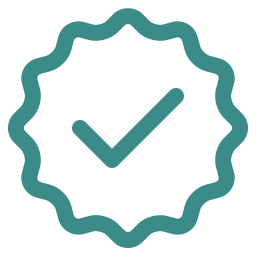Breathe In, Transform Within: Unveiling the Crucial Role of Breathwork in Pilates Practice
You know that feeling of pure bliss when you're fully connected with your body during a session on your best home Pilates Reformer?
Well, let me tell you a little secret: the key to unlocking that sense of harmony lies in your breath.
In this article, we'll dive into the world of Pilates and breathwork, exploring just how crucial proper breathing techniques are to enhancing your practice.
From increased focus and control to improved flexibility and stress management, mastering the art of breath can truly transform your Pilates experience.
So take a deep breath in, and let's get started on this journey together.
The Connection Between Breath and Movement
You'll notice that your breath is intimately connected to your movement during practice on your Pilates equipment for sale.
The rhythm and depth of your breath can greatly influence the effectiveness of each exercise, making it an essential aspect of your overall experience.
As you engage in different movements and positions, such as the roll-up or the hundred, you'll find that coordinating your breath with each action enhances both your physical performance and mental focus.
In Pilates, proper breathing technique when exercising on your Merrithew Reformer is crucial for several reasons.
First, it helps facilitate a strong mind-body connection by directing your attention inward.
By focusing on the inhale and exhale, you become more aware of how each movement feels in your body.
This heightened awareness allows you to make subtle adjustments and maintain control throughout the exercises.
Secondly, synchronized breathing promotes efficient oxygen flow to the muscles.
Deep inhalations bring fresh oxygen into the bloodstream while exhaling eliminates waste products like carbon dioxide.
This exchange nourishes and energizes your muscles, enabling them to work more effectively.
It also helps prevent unnecessary tension or strain that can arise from holding one's breath during challenging movements.
Lastly, incorporating conscious breathing into your Pilates practice creates a sense of mindfulness and relaxation.
By taking deep breaths and focusing on the present moment, you cultivate a calm state of mind that enhances concentration and reduces stress levels.
Understanding this connection between breath and movement sets the foundation for exploring specific breathing techniques for increased focus and control in Pilates practice.
These techniques will allow you to deepen your understanding of how to use breath as a tool for greater precision in executing exercises while maintaining overall well-being throughout your session.
Breathing Techniques for Increased Focus and Control
To enhance your focus and control, try implementing these breathing techniques during your sessions.
Proper breathing is a fundamental aspect when practicing your Align Pilates routine that can greatly impact the effectiveness of your movements.
By incorporating specific breathing patterns into your routine, you can deepen your mind-body connection and achieve better results.
One technique to improve concentration is called diaphragmatic breathing.
This involves taking slow, deep breaths while engaging the diaphragm muscle.
As you inhale deeply through your nose, allow your abdomen to expand fully, filling up with air.
Then exhale slowly through pursed lips, drawing your navel towards your spine.
This controlled breath allows for increased oxygen intake and helps calm the mind.
Another helpful technique is synchronized breathing with movement.
Coordinate each inhalation and exhalation with a specific phase of an exercise or transition between movements.
For example, when performing a leg extension exercise, inhale as you prepare to extend the leg and exhale as you complete the movement back to the starting position.
By synchronizing breath with movement in this way, you create a sense of flow and rhythm in your practice.
By utilizing these breathing techniques, you will not only enhance focus but also gain better control over each movement in Pilates exercises.
The next section explores how proper breathing can further enhance core activation during your practice sessions.
Now that you have learned how to improve focus and control through effective breathing techniques, let's explore how proper breathing can optimize core activation in Pilates exercises.
Enhancing Core Activation with Proper Breathing
Proper breathing techniques in Pilates lead to enhanced core activation and improved overall performance.
When you focus on your breath during a Pilates session, you engage your deep core muscles more effectively, providing stability and strength to your entire body.
Inhaling deeply through the nose and exhaling fully through the mouth allows for optimal oxygen intake and carbon dioxide release, facilitating a steady flow of energy throughout your practice.
By synchronizing your breath with each movement, you create a rhythm that promotes proper alignment and control.
As you inhale, imagine filling your lungs from the bottom up, expanding your ribcage outwards.
This deep inhalation expands your diaphragm downward, creating space for increased engagement of the transverse abdominis - one of the key core muscles when doing Pilates on your SPX Max Reformer.
As you exhale, visualize drawing your navel towards your spine, gently contracting the deep abdominal muscles.
This exhalation helps activate both the transverse abdominis and pelvic floor muscles, further enhancing core stability.
With consistent practice of these breathing techniques, not only will you strengthen and tone your core more effectively but also improve your overall coordination and balance.
Transitioning into the next section about 'the role of breath in improving flexibility and range of motion,' it is important to note that proper breathing can also contribute to greater flexibility in Pilates.
By consciously using full inhalations to prepare for movements that require lengthening or stretching, you allow for better muscle elongation while maintaining control. Additionally, using focused exhalations during challenging stretches can help relax tight muscles and increase their range of motion over time without causing strain or injury.
The Role of Breath in Improving Flexibility and Range of Motion
By synchronizing your breath with each movement in Pilates, you create a rhythm that promotes improved flexibility and range of motion.
When you focus on your breath during your Pilates practice, you allow yourself to connect deeply with your body and its movements.
As you inhale, imagine the breath flowing into the areas that need attention or gentle stretching.
And as you exhale, envision any tension or tightness leaving your body. This conscious breathing technique enhances the effectiveness of each exercise and helps to release any restrictions in your muscles.
As you perform the various exercises in Pilates, such as leg circles or spinal twists, pay close attention to how your breath complements each movement.
Inhaling deeply during the preparatory phase of an exercise helps to engage the necessary muscles and prepare them for action.
Exhaling during the exertion phase allows for better control and stability throughout the movement.
It is through this intentional coordination of breath and movement that you can experience increased flexibility and range of motion.
When you synchronize your breath with each Pilates movement, not only do you enhance physical performance but also cultivate a sense of mindfulness within yourself.
The rhythmic flow of inhalation and exhalation creates a meditative state where stress dissipates, allowing room for relaxation to take place.
Your mind becomes focused solely on the present moment as it tunes into every nuance of your body's response to each exercise.
Using breath to manage stress and promote relaxation is an essential aspect of integrating mindful practices into daily life.
As we explore further into this topic, let's delve deeper into specific techniques that harness the power of our breath to bring about a calm state of mind and overall well-being.
Using Breath to Manage Stress and Promote Relaxation
When you focus on your breath, you can effectively manage stress and promote relaxation.
Breathwork is a powerful tool that can help you find calmness amidst the chaos of everyday life.
By simply paying attention to your breath and consciously taking slow, deep breaths, you can activate your body's relaxation response.
Deep breathing triggers the parasympathetic nervous system, which is responsible for rest and relaxation.
As you inhale deeply, imagine filling up your belly with air like a balloon expanding. Then slowly exhale, releasing any tension or tightness in your body.
This intentional breathing technique helps slow down your heart rate and lowers blood pressure, allowing you to feel more at ease.
Incorporating breath awareness into your Pilates C2 Pro Reformer practice can enhance its benefits even further.
With each movement, pay attention to how your breath flows through your body. Inhale deeply as you prepare for a movement and exhale fully as you execute it.
This synchronization of movement and breath not only increases oxygen intake but also helps to center yourself mentally.
To deepen your Pilates practice through breathwork exercises, try incorporating techniques such as alternate nostril breathing or diaphragmatic breathing.
These exercises can help improve lung capacity, increase energy levels, and bring about a sense of clarity and focus during your practice.
Breathwork Exercises to Deepen Your Pilates Practice
As you continue your exploration of the connection between breath and Pilates, let's delve into specific breathwork exercises that will enhance your practice.
By incorporating these exercises, you can deepen your understanding of how breath influences movement and unlock the full potential of your Pilates routine.
Imagine yourself in a tranquil studio, surrounded by soft lighting and soothing music.
Take a moment to center yourself as you prepare for the following exercises:
- Diaphragmatic Breathing
Lie on your back with your knees bent and feet flat on the floor. Place one hand on your chest and the other on your abdomen.
Inhale deeply through your nose, allowing your lower abdomen to rise as you fill it with air.
Exhale fully through pursed lips, gently contracting your abdominal muscles.
- Rib Expansion
Stand tall with feet hip-width apart.
Place hands on either side of your ribcage. Inhale deeply, expanding your ribcage outward into your hands without lifting or tensing your shoulders.
Exhale slowly while maintaining this expansion.
- Segmented Breathing
Sit comfortably with a straight spine. Visualize dividing your torso into three sections: upper chest, middle ribs, and lower belly.
Inhale deeply, filling each section sequentially from bottom to top. Exhale slowly in reverse order.
By practicing these breathwork exercises regularly, you will develop greater body awareness and control during every movement in Pilates.
Incorporating Breath Awareness into Every Movement
Incorporating breath awareness into each movement allows for a deeper mind-body connection and enhances the overall effectiveness of your routine.
By consciously linking your breath with every exercise, you can create a sense of unity between your body and mind, leading to a more fulfilling Pilates practice.
Breath is an essential component of Pilates because it acts as a bridge between your physical movements and mental focus.
When you synchronize each inhale and exhale with your exercises, you tap into the power of breathwork to enhance the benefits of Pilates.
This mindful breathing pattern helps to calm the nervous system, increase oxygen flow to muscles, improve concentration, and promote relaxation.
To incorporate breath awareness into every movement, start by taking deep belly breaths before initiating any exercise on your Merrithew V2 Max Reformer.
As you move through each motion, stay attuned to the rhythm of your breath. Inhale deeply during the preparatory phase and exhale fully as you exert effort or engage specific muscles.
Maintaining this conscious connection throughout your routine not only fosters better control over movements but also helps prevent strain or injury.
The act of focusing on your breath encourages proper alignment, core engagement, and smooth transitions between exercises.
Remember that incorporating breath awareness is a skill that develops over time. Be patient with yourself as you cultivate this aspect in your practice.
Start by dedicating a few minutes at the beginning or end of each session solely focused on conscious breathing.
Gradually integrate it into all aspects of your routine until it becomes second nature.
As you deepen your understanding and application of breathwork in Pilates, you will notice an increased sense of vitality, improved posture, enhanced flexibility, and greater overall well-being.
Embrace this opportunity to connect with both yourself and others within the Pilates community who value this holistic approach to fitness and wellness.
Frequently Asked Questions
Can Pilates be effective without focusing on breathwork?
Yes, focusing on breathwork is essential for an effective Pilates practice. Breathwork not only helps you connect with your body, but it also enhances the benefits of each exercise.
By synchronizing your breath with movement, you engage your deep core muscles and improve stability and control.
Additionally, proper breathing oxygenates your muscles and reduces tension, allowing for a more fluid and efficient workout.
How does breathwork in Pilates differ from other forms of exercise?
Breathwork in Pilates differs from other forms of exercise by placing a specific emphasis on the quality and control of your breath.
In Pilates, you are encouraged to synchronize your movements with your inhales and exhales, creating a deep connection between mind and body.
This focus on breath helps to activate the deep core muscles, enhance concentration, and promote relaxation.
By incorporating breathwork into your Pilates practice, you can experience a more integrated and mindful workout.
Can improper breathing hinder progress in Pilates?
Improper breathing can definitely hinder your progress in Pilates.
When you don't breathe properly, you limit the oxygen supply to your muscles, making them tired and less effective. It's like trying to run a race without enough fuel in your tank.
Are there any specific breathing techniques that can help with pain management during Pilates?
To manage pain during Pilates, specific breathing techniques can be incredibly helpful.
One technique is diaphragmatic breathing, where you focus on deep inhalations and exhalations.
This helps to activate your parasympathetic nervous system, promoting relaxation and reducing pain perception.
Another technique is paced breathing, which involves inhaling for a certain count and exhaling for a longer count. This rhythmic breathing can help distract from pain and create a sense of calmness in your practice.
How long does it take to see the benefits of incorporating breathwork into a Pilates practice?
Incorporating breathwork into your Pilates practice has both immediate and long-term benefits.
While you may feel more centered and focused after just one session, the true power of breathwork lies in its cumulative effects.
It's like planting a seed in a garden - it takes time for the plant to grow and blossom.
Similarly, consistent practice of breathwork in Pilates will gradually enhance your mind-body connection, improve your posture, and increase your overall well-being.
Conclusion
Congratulations on completing this article on the importance of breath in your Pilates practice!
By understanding the connection between breath and movement, you have gained valuable insights into how breathing techniques can enhance your focus, control, core activation, flexibility, and range of motion.
Moreover, incorporating breathwork exercises into your routine will not only deepen your Pilates practice but also help you manage stress and promote relaxation.
So keep breathing deeply and mindfully as you continue to improve your mind-body connection through Pilates.




